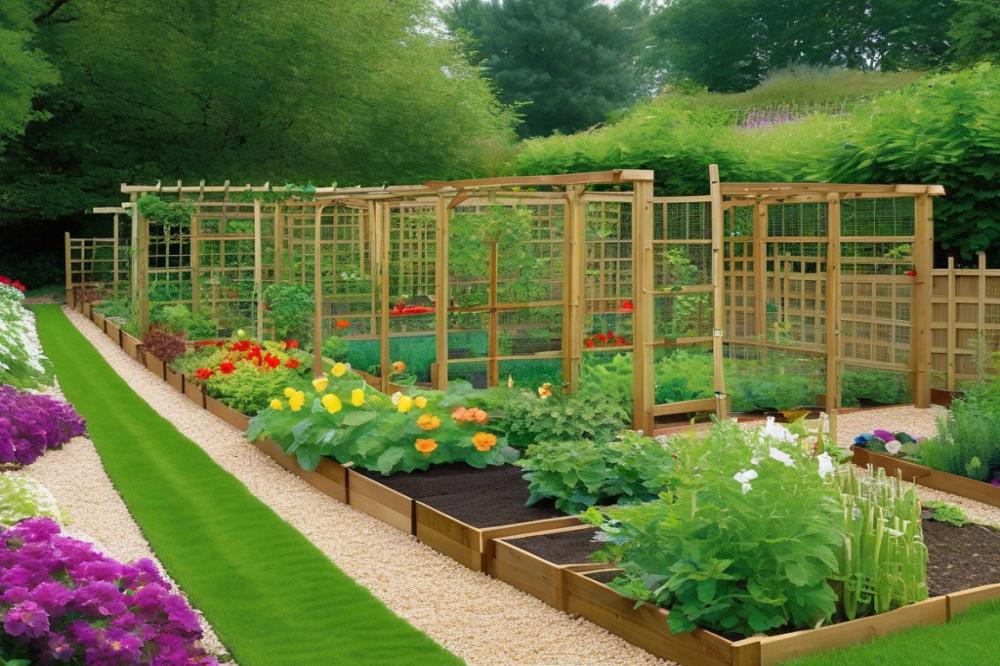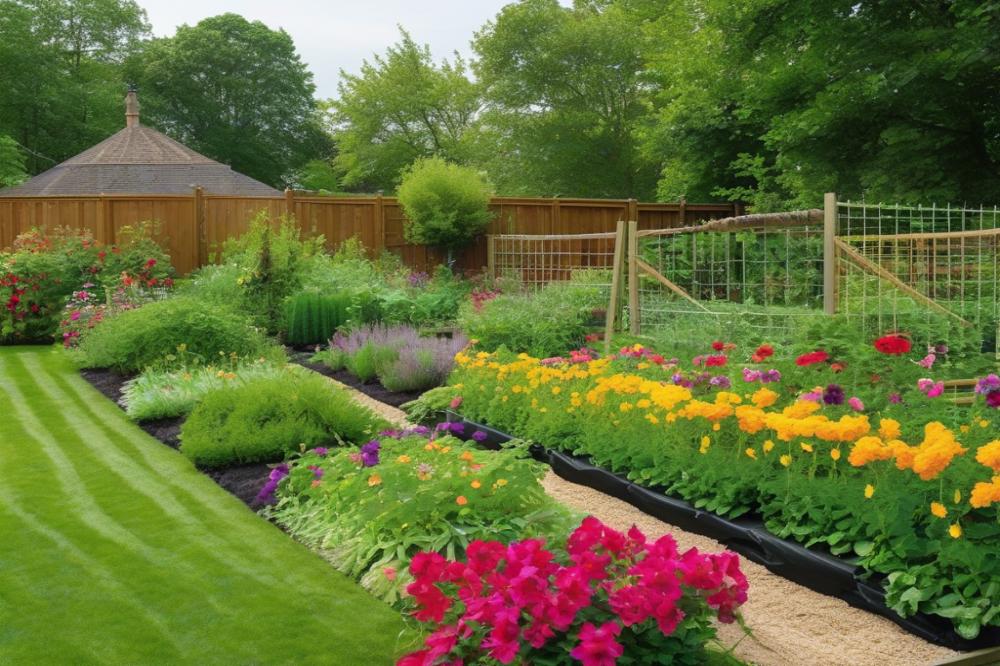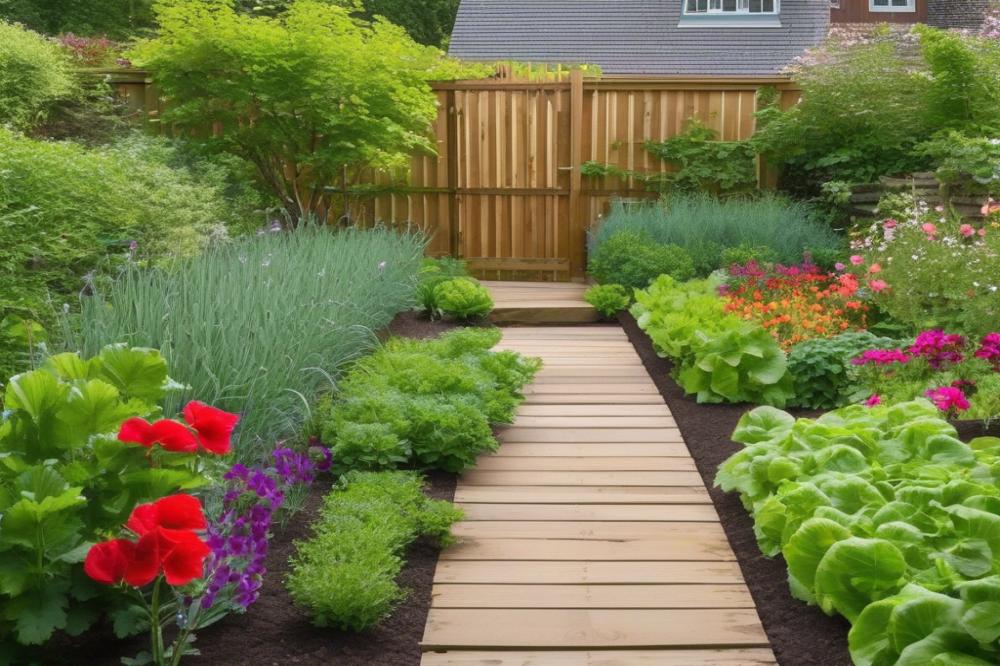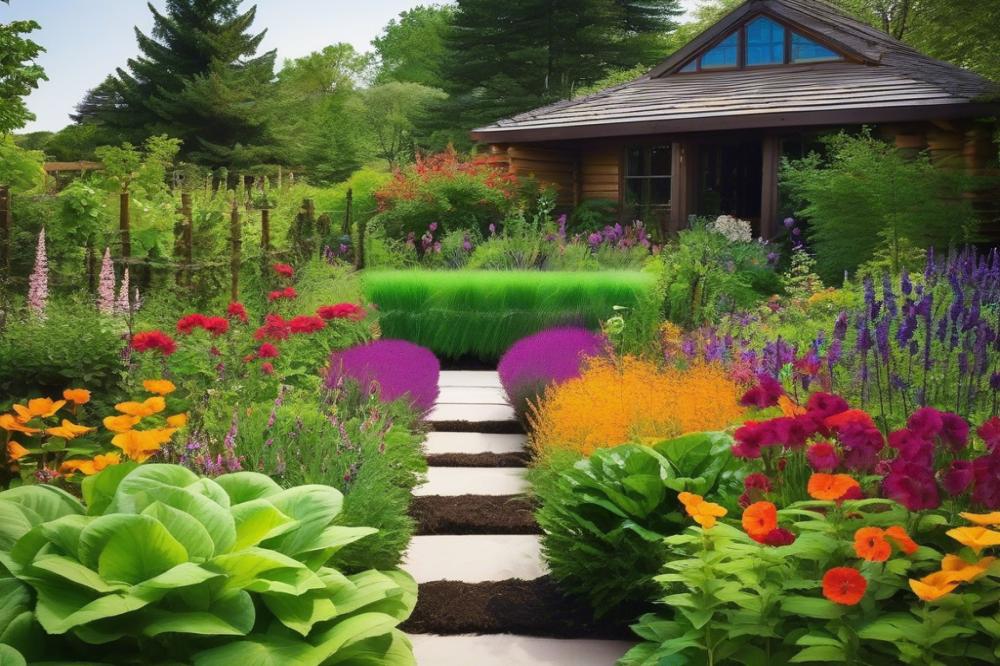Understanding the Significance of physical barriers in organic gardening
In the world of organic gardening, protecting plants is essential. Pests can wreak havoc on your hard work. That’s where physical barriers come into play. These structures help keep unwanted critters at bay while allowing your plants to flourish. Utilizing these techniques promotes sustainable gardening and encourages a thriving ecosystem.
Various types of barriers exist, each serving unique purposes. garden fencing is a popular choice for deterring larger wildlife like deer and rabbits. It acts as a strong shield, preventing them from nibbling on your prized vegetables and flowers. Row covers are another effective option. These lightweight fabrics not only keep insects off but also provide a buffer against harsh weather conditions.
Trellises play a different role in managing plant growth. They support climbing plants while maximizing vertical space. Raised beds can help prevent soil erosion. Additionally, they often create better drainage and soil health. Each barrier type offers distinctive advantages, making garden design both functional and visually appealing.
Effective pest control is fundamental in maintaining a healthy garden. Physical barriers protect plants from a variety of threats, making them invaluable tools for any gardener. When used thoughtfully, they contribute significantly to the overall health and productivity of your garden. With the right preparation and planning, you can create a space where your plants thrive, free from the challenges posed by pests and harsh elements.
What are Physical Barriers?


In organic gardening, physical barriers are structures designed to keep pests away from plants. These barriers can take various forms, such as garden fencing, row covers, and trellises. Unlike chemical methods that can harm the environment, these strategies offer a safe alternative for pest control.
Barriers function by creating an obstruction that pests cannot cross. For example, raised beds can elevate plants, making them less accessible to ground-dwelling insects. Row covers not only protect against pests but also shield against extreme weather. Each solution helps maintain plant protection without the need for harsh chemicals.
Combining these barriers with other sustainable gardening practices is essential. Incorporating wildlife deterrents can keep larger animals away, while proper garden design promotes healthy growth. Strategies like crop rotation and companion planting work well alongside physical deterrents, creating a robust system for managing pests.
Moreover, these methods also address issues like soil erosion. By using trellises and raised beds, gardeners can improve drainage and maintain soil health. This synergy between barriers and sustainable techniques supports a thriving garden ecosystem.
Types of Physical Barriers


When it comes to organic gardening, using various types of barriers is essential for effective pest control and plant protection. Each type serves a unique purpose and can greatly enhance your garden’s success.
Garden Fencing
Choosing the right materials for garden fencing can make a significant difference. Wooden, vinyl, or metal options are popular. A fence 3 to 4 feet high can deter rabbits and deer. When designing your fence, consider the layout. Ensure it encloses the entire garden area. Adding buried fencing helps prevent burrowing animals from sneaking under. Additionally, use gates that close securely. This strategy keeps out unwanted pests while providing easy access for the gardener.
Row Covers
Row covers are lightweight fabrics that provide an excellent level of protection. They create a barrier against insects while allowing sunlight and rain to nourish the plants beneath. A major benefit of row covers is their ability to provide warmth during cool nights, which can be crucial for seedlings. When applying these covers, make sure to secure the edges. This step prevents the wind from blowing them away. The result is a safer microclimate for your crops.
Trellises
Utilizing trellises is an efficient way to save space while protecting plants. Vertical growth not only maximizes your garden design but also improves air circulation. This factor can reduce the risk of disease among plants. Moreover, trellises can act as barriers to some pests when strategically placed. Climbing plants can flourish on trellises, creating a natural shield against ground-dwelling bugs. Raised beds work particularly well with trellises, as they help manage soil erosion while offering easy access for maintenance.
Setting Up Garden Fencing


Implementing effective garden fencing is vital for protecting your plants. Choosing the right materials is the first step. Options like wood, wire, or plastic each have their own benefits and drawbacks.
Wood provides a sturdy barrier. It blends well with natural landscapes but can rot over time. Wire fencing is durable and allows for visibility. It often works best for keeping out smaller animals. Plastic options are lightweight, making them easy to install. However, they may not resist strong elements or larger pests.
Height and depth are crucial factors when setting up fencing. For example, rabbits and groundhogs require lower barriers, while deer demand something taller. Fencing should generally be at least 4 to 6 feet high to deter deer effectively. If you plan to keep out burrowing animals, like gophers, the fence should extend at least a foot into the ground as well.
Placement strategies play an important role in garden design. Consider surrounding your raised beds with barriers. This will help reduce soil erosion while keeping pests away. Using row covers in conjunction with fencing can enhance plant protection, particularly in the early growing stages.
Think about the types of wildlife in your area. Squirrels, raccoons, and domestic animals like dogs may also pose a threat. Ensure your fence is securely installed and sealed to prevent them from slipping through gaps. Incorporate additional wildlife deterrents if necessary, like motion-activated sprinklers.
In sum, taking these steps will help create a safe environment for your plants. Building a solid fence helps not just in pest control, but also creates an organized and visually appealing space. By prioritizing strong barriers, you can enjoy a flourishing organic garden.
Utilizing Row Covers


Row covers are a fundamental tool in organic gardening. They provide essential protection for plants, safeguarding them from pests and harsh weather. Choosing the right type of cover can significantly influence your garden’s success. Various materials are available, each with specific advantages.
Types of Materials and Their Applications
Commonly used materials for row covers include lightweight fabric, plastic, and mesh. Lightweight fabric is often preferred for young plants. It helps in providing some warmth while allowing light and moisture to penetrate. Plastic covers can create a greenhouse effect during cool temperatures but might lead to overheating when the weather warms. Mesh row covers are excellent for pest control, as they create a barrier while letting in air and light.
Seasonal Advantages and Considerations for Crop Protection
Timing plays a critical role when utilizing row covers. Spring planting benefits significantly from their use. They can protect tender seedlings from late frosts. In summer, these covers can ward off pests such as aphids and beetles. However, it’s vital to monitor the temperature under the cover. Hot conditions can stress plants, so ventilation is necessary. Always remember that effective garden design includes understanding seasonal changes and the specific needs of your crops.
Impact on Microclimates and Pest Management
Row covers can alter the growing environment around plants. When placed over raised beds, they create a microclimate that encourages healthy growth. Warmer temperatures promote early plant development, while protecting against frost damage. Additionally, using these covers helps with pest management. They act as wildlife deterrents, keeping birds and larger insects away. Combining them with garden fencing can provide even more robust protection.
Overall, row covers are versatile. They support sustainable gardening practices by reducing the need for chemical pesticides. Proper application of these covers enhances plant protection and promotes soil health. Through thoughtful setup and usage, gardeners can enjoy a thriving garden while minimizing the impact of pests and environmental challenges.
Implementing Trellises for Plant Protection
Trellises play a vital role in the design of any organic garden. They not only support climbing plants but also create a fantastic structure that helps with plant growth. Various types of trellises cater to different plants. For instance, vertical garden trellises work well for beans and peas, while A-frame structures are great for cucumbers and tomatoes. Utilizing these options allows gardeners to maximize their growing space.
When installing a trellis, placement is key. Ensure that it receives adequate sunlight while offering some shade to the plants that require it. Secure the base of the trellis firmly in the ground to prevent it from toppling over. Regular maintenance checks are important too. Inspect for damage and make repairs as needed to keep them sturdy. Wood treated with natural oils can offer durability, helping to combat decay and extending the life of your trellis.
Trellising offers multiple benefits beyond simple support. It encourages air circulation around plants, reducing the risk of disease. Proper airflow helps maintain a healthy garden environment. Moreover, taller plants can be shielded from pests. By lifting them off the ground, pests have a harder time reaching them. This method facilitates natural pest control, which is crucial in organic gardening.
Implementing trellises also contributes to tackling soil erosion. With plants growing upwards, you reduce the risk of soil being washed away during heavy rain. Consider combining trellises with raised beds or row covers for additional protection. These strategies work as effective wildlife deterrents and can help create a harmonious balance in your sustainable gardening efforts. Overall, using trellises aligns perfectly with the goals of innovative garden design.
Incorporating Raised Beds
Raised beds have become an essential part of modern organic gardening. Their structure offers numerous advantages, especially when used alongside tools like fencing and row covers. One significant benefit is the prevention of soil erosion. Elevated soil levels help minimize runoff. With better drainage, plants thrive and roots stay healthy.
Plant protection is another aspect where raised beds shine. These structures make it more difficult for pests to reach your crops. With some careful garden design, you can create a barrier that deters wildlife. For gardeners, this means less time spent on pest control and more focus on growing. One can also add trellises to raised beds. This setup maximizes space and supports climbing plants, enhancing the overall yield.
Combining raised beds with garden fencing provides a double layer of protection. Fencing keeps larger animals at bay. It acts as a wildlife deterrent, preventing rabbits or deer from munching on your veggies. Row covers can be draped over the beds when necessary. They shield fragile plants from harsh weather and pesky insects. This simple combination results in healthier produce and fewer headaches for the grower.
These strategies align perfectly with sustainable gardening practices. The overall health of your garden improves when you address both soil stability and plant security. Raised beds, paired with supportive structures, offer a comprehensive approach. You not only safeguard your crops but also create an efficient growing system. Such methods highlight the beauty of integrating physical shapes into traditional gardening.
Combining Barriers with Wildlife Deterrents
Integrating wildlife deterrents into an organic gardening plan can enhance your garden’s resilience against pests. Many methods for pest control focus on protecting plants while maintaining an eco-friendly approach. Explore the following strategies to effectively combine barriers with wildlife deterrents.
Natural and Sustainable Deterrent Methods
Creating a garden environment that discourages unwanted visitors is essential. Using natural repellents can be effective. For instance, planting certain herbs like rosemary or mint around the perimeter can deter some critters. These plants release scents that many animals find off-putting.
Another option is using homemade sprays made from garlic or hot peppers. These options provide additional plant protection without using harsh chemicals. Mulching around plants not only conserves moisture but also creates a physical barrier that can confuse animals.
Effective Design Strategies to Enhance Barriers
Implementing effective garden design is key. Installing garden fencing can serve as a strong line of defense against larger wildlife. Fences should be at least three feet high and buried a foot deep. This strategy prevents animals from digging under or jumping over.
Utilizing row covers also protects plants from pests while allowing sunlight and water through. They can be particularly useful in the spring, when young seedlings are most vulnerable. Trellises can assist in lifting plants off the ground, making them harder for some animals to reach. Additionally, raised beds help manage soil erosion while keeping plants safe from ground-dwelling pests.
Case Studies on Successful Wildlife Management in Gardens
Numerous gardeners have employed these techniques with great success. One case involved a community garden that struggled with rabbits. After installing a combination of tall barriers and planting deterrent herbs, they saw a significant decrease in rabbit activity.
Another example is a family garden that focused on integrating companion planting. By carefully positioning marigolds near vegetables, they successfully warded off various insects. These practical implementations highlight the effectiveness of combining barriers with wildlife deterrents.
With thoughtful planning and the right mix of strategies, you can create a thriving organic garden, free from unwanted wildlife intrusions. Embracing these solutions fosters a healthy ecosystem while protecting your precious plants.
Wrapping Up the Benefits of Barriers in Organic Gardening
In summary, utilizing barriers in gardening brings a host of advantages. These methods can greatly enhance pest control, protecting your plants from unwanted intruders. Gardeners can create a more thriving environment, leading to healthier yields. Additionally, thoughtful garden design is key. Consideration of how barriers will fit into your overall layout can maximize their effectiveness.
Sustainable practices are essential for anyone looking to foster a better gardening experience. By implementing simple strategies such as garden fencing or row covers, you can reduce dependence on chemicals. This not only aids in protecting your crops but also nurtures the ecosystem.
So, think about adding these techniques to your gardening toolkit. The efforts you put in today will pay off with vibrant, productive plants tomorrow. Embrace these sustainable methods, and watch your garden flourish!



